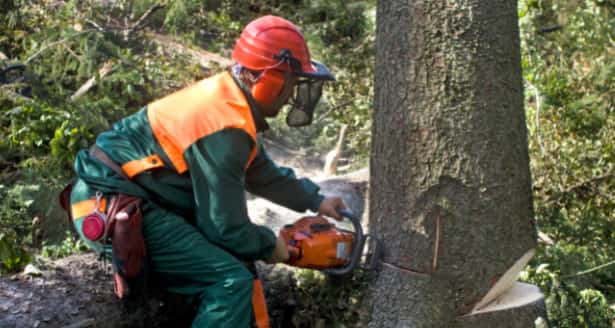Introduction: As nature’s sentinels, trees stand tall and proud, providing beauty, shade, and habitat for countless species. However, when fierce winds blow, these majestic giants can become vulnerable to damage, posing risks to property and safety. At Stowmarket Tree Surgeons, we recognise the importance of proactive tree care to mitigate wind damage and ensure the resilience of trees in the face of adverse weather conditions. In this blog post, we’ll explore the role of tree trimming in reducing wind damage and safeguarding both trees and communities.
1. Crown Thinning
Crown thinning is one of the most effective ways to reduce wind resistance and minimise the risk of wind damage. Crown thinning involves selectively removing inner branches and foliage to reduce the density of the tree canopy. This allows wind to pass more freely through the tree, reducing the likelihood of branches breaking or the tree toppling during high winds. Crown thinning also promotes better air circulation within the canopy, which can help prevent the buildup of wind pressure and reduce the risk of structural failure.
2. Deadwood Removal
Dead or decaying branches are more susceptible to wind damage, weaker and more likely to break under stress. Removing deadwood from trees helps eliminate potential hazards and reduce the risk of branches falling during storms. Tree surgeons carefully inspect trees for signs of dead or diseased branches and selectively remove them to improve the tree’s overall health and structural integrity. By removing deadwood, Stowmarket Tree Surgeons reduce the risk of wind damage and enhance the safety and aesthetics of trees.
3. Crown Reduction
In some cases, trees with overly dense or sprawling canopies may benefit from crown reduction to reduce wind resistance and improve stability. Crown reduction involves selectively pruning branches to reduce the overall size and weight of the tree canopy. This helps lower the tree’s centre of gravity and minimise the risk of wind-induced tipping or uprooting. The crown reduction also promotes a more balanced and symmetrical tree structure, enhancing its resilience against wind forces while maintaining its natural beauty.
4. Structural Pruning
Structural pruning is a proactive approach to tree care that trains young trees to develop strong, well-balanced branch architecture. By selectively removing competing or poorly attached branches, tree surgeons can promote the growth of a central leader and establish a sturdy framework that can better withstand wind forces. Structural pruning also helps prevent the development of weak crotches or narrow branch angles, which are prone to splitting under pressure. Investing in structural pruning early in a tree’s life can significantly reduce the risk of wind damage in the future.
Conclusion: As stewards of the urban and rural landscape, experts play a vital role in protecting trees and communities from the destructive forces of wind. By implementing proactive tree trimming practices, they can reduce wind resistance, strengthen tree structure, and enhance the resilience of trees against wind damage. With proper care and maintenance, trees can continue to thrive and provide invaluable benefits for future generations.
Call us on: 01449 706 096
Click here to find out more about Stowmarket Tree Surgeons
Click here to complete our contact form and see how we can help with your tree’s needs.

